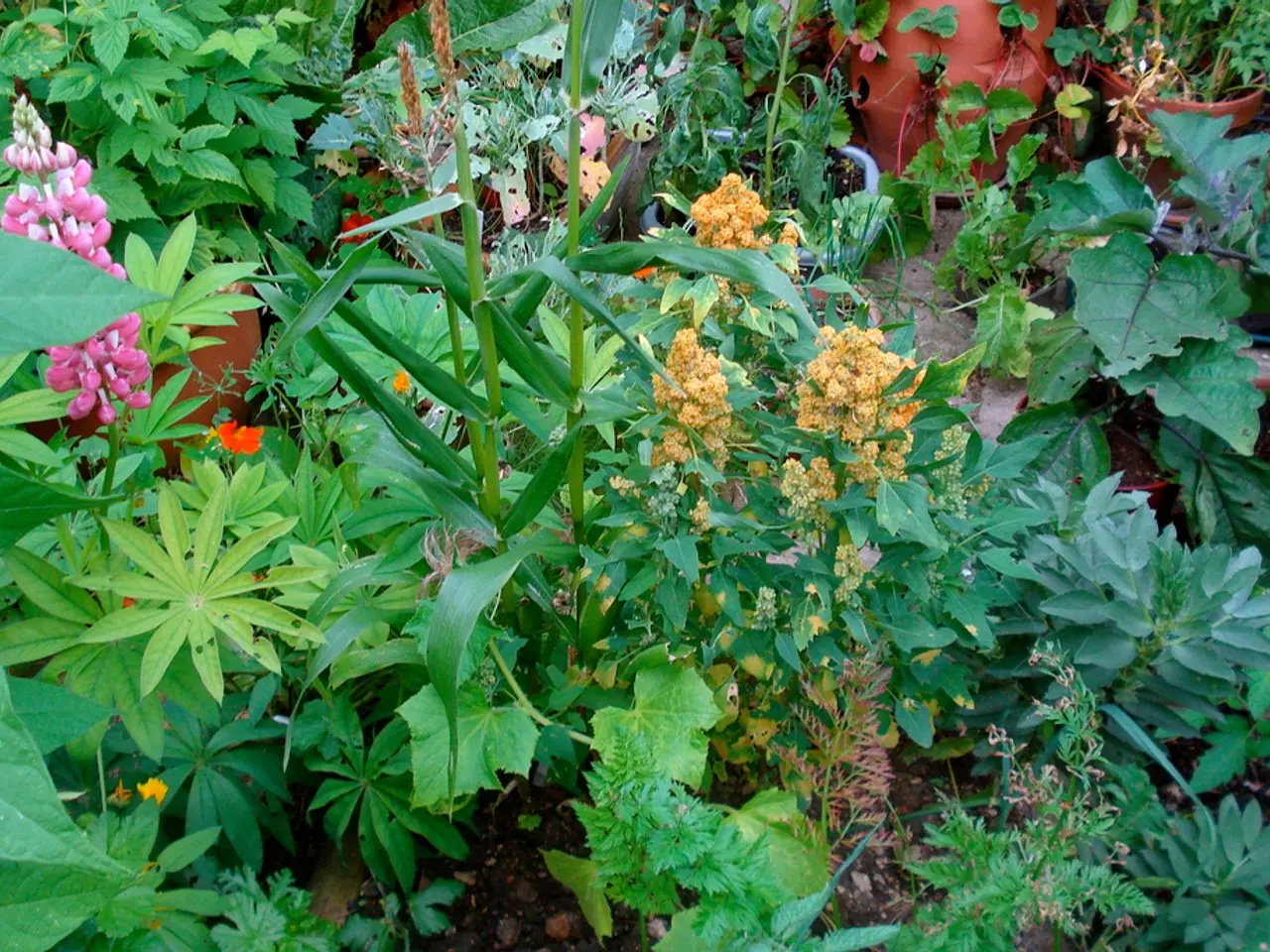Strategies for Shielding Vegetation from Excessive Rain: Crucial Defense Measures
Protecting Plants from Heavy Rainfall: Essential Strategies for Gardeners
Heavy rainfall can be both a blessing and a curse for gardeners. While it nourishes the soil and helps plants grow, it can also lead to flooding, soil erosion, and root drowning if it comes down too hard. Here are some effective strategies to protect your plants during periods of intense or prolonged rainfall.
Ensuring Proper Drainage
Avoid waterlogging by using pots with drainage holes, raising garden beds 15–30 cm above ground, and incorporating coarse gravel or sand at the base to help excess water run off. Trenches or drainage channels can divert excess water away and prevent root rot and fungal diseases.
Mulching
Applying a 2–3 inch (5–7 cm) layer of organic mulch such as straw, coconut husk, dried leaves, bark chips, or grass clippings around plants before heavy rains can act as a sponge to absorb excess water, prevent soil erosion and splash damage to roots, suppress weeds, and enrich soil as it decomposes.
Pruning and Trimming
Remove dead foliage and trim overgrown branches before the rainy season to open the plant canopy, improve air circulation, reduce shaded damp areas, and minimize fungal infections.
Temporary Protective Covers and Windbreaks
Use materials like burlap, tarps, frost blankets, or shade nets to shield plants from heavy rain and wind damage, especially during storms. Low garden tunnels or transparent rain covers can also help limit direct water impact.
Moving Potted Plants
Container plants can be relocated indoors or grouped in sheltered spots to avoid water stagnation and physical damage during heavy rains.
Amending Soil with Compost
Before rains, applying compost enriches soil structure, promotes deeper root growth for better stability, and reduces compaction from heavy water influx.
Other Tips
- Inspect plants for broken or diseased branches after a heavy rain and prune them to prevent decay and disease.
- Laying stone or gravel paths can reduce mud and soil compaction.
- Damaged plants can be propped up or staked to help them regain strength.
- Watering techniques should adjust based on current weather patterns, and water should be aimed at the roots rather than the foliage to prevent fungal diseases.
- Mulching can safeguard the soil and roots from becoming overwhelmed by rainwater.
- Soil moisture levels should be monitored to determine when plants need water and when they have had enough.
- Potted plants should have proper drainage, with drainage holes and a potting mix designed to prevent waterlogging.
- After a serious downpour, snipping away broken stems is necessary to prevent decay and disease.
- In recovering from heavy rain, it's important to hold back on watering to prevent drowning plants.
- Mulch can conserve moisture and limit the need for frequent watering.
- Watering should be done in the morning to reduce evaporation and fungal growth.
Expert Advice
Gardener Larry Meyers, with over 10 years of lawn and landscaping experience, aims to share his gardening knowledge and create a one-stop shop for gardening information. Understanding the nutritional needs of your garden is vital, and getting your soil tested is the first step. Choosing containers with multiple drainage holes is important for container gardening. Nitrogen, phosphorus, and potassium are essential nutrients for plant growth.
In addition, creating swales or rain gardens can help manage excess water and prevent soil erosion. Coverings like cloches or plastic sheets can protect plants during unexpected showers. Regular inspections of your garden are key to catching early signs of trouble.
Sources: [1] Meyers, L. (2021). Preparing Your Garden for Heavy Rainfall. Retrieved from www.gardeningsimplified.com [2] Meyers, L. (2020). Top Tips for Protecting Plants from Heavy Rain. Retrieved from www.gardeningsimplified.com [3] Meyers, L. (2019). Gardening in a Rainy Climate: Essential Strategies. Retrieved from www.gardeningsimplified.com [4] Meyers, L. (2018). Protecting Your Potted Plants from the Elements. Retrieved from www.gardeningsimplified.com
- To create a flourishing health-and-wellness lifestyle and home-and-garden environment, employing Larry Meyers' expertise is vital. His websites provide essential strategies for container gardening, gardening in rainy climates, and protecting plants from heavy rainfall (www.gardeningsimplified.com).
- By implementing strategies such as proper soil testing, using containers with multiple drainage holes, and incorporating organic mulch, gardeners can protect their plants from the adverse effects of heavy rainfall, while also improving soil structure and promoting plant growth (fitness-and-exercise).
- In addition to gardening, understanding the nutritional needs of plants is crucial for their overall health. Larry Meyers emphasizes the importance of essential nutrients like nitrogen, phosphorus, and potassium for plant growth and suggests creating swales or rain gardens to manage excess water and prevent soil erosion (science and lifestyle).




